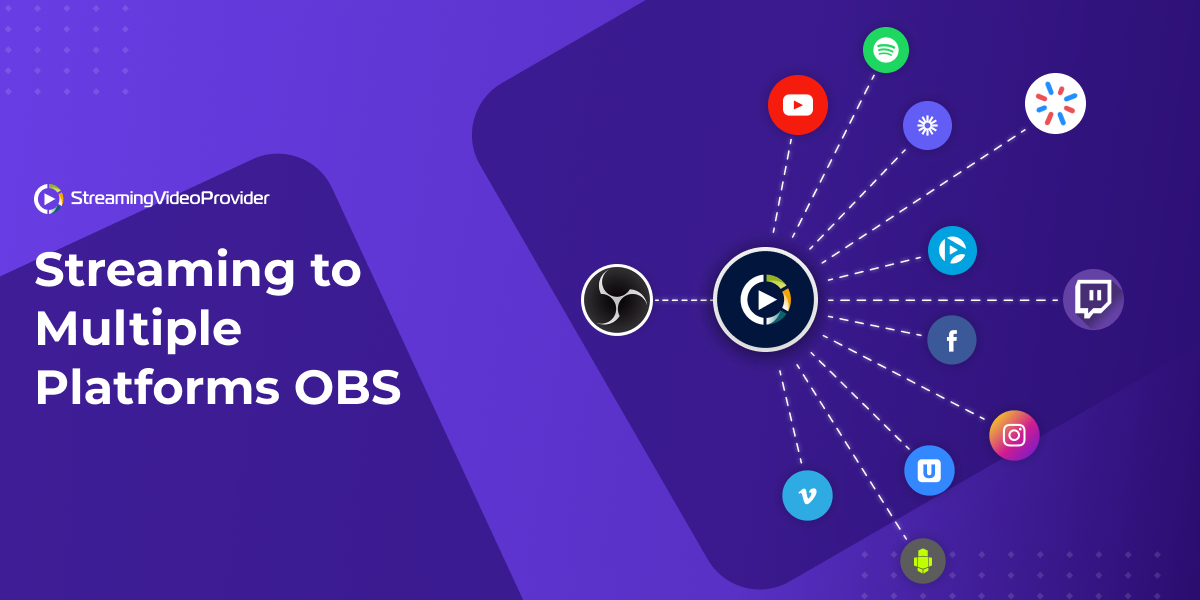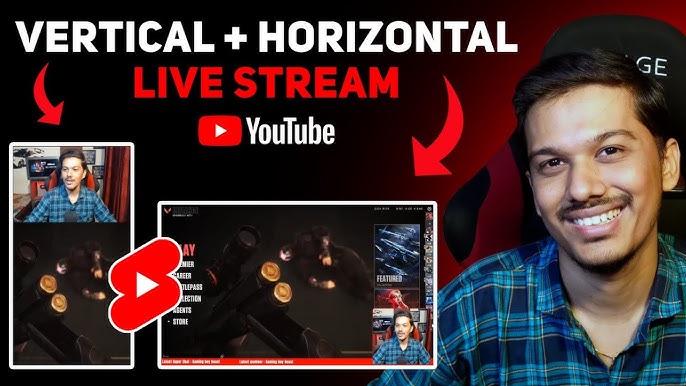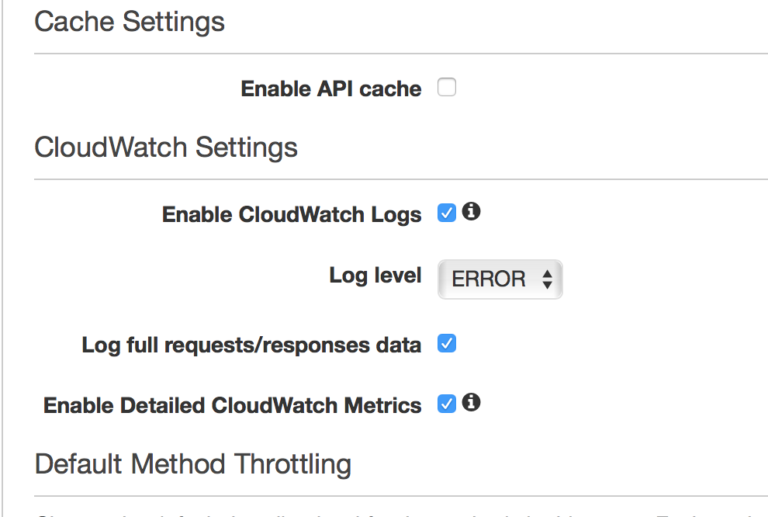How to Stream on Multiple Platforms at Once: Ultimate Guide
Streaming on multiple platforms at once can boost your audience. It saves time and effort.
Streaming on multiple platforms means sharing your content on several sites like YouTube, Facebook, and Twitch at the same time. This way, you can reach more people and grow your following faster. Imagine you are a gamer or a musician.
Instead of streaming to just one platform, you can go live on several at once. This means your fans on different platforms can all watch you in real time. It’s a great way to connect with more viewers and keep everyone engaged. Plus, it saves you from the hassle of uploading your content to different sites later. Ready to learn how? Let’s dive in!

Credit: www.dacast.com
Introduction To Multi-platform Streaming
Streaming has grown incredibly popular. Many content creators want to reach a wider audience. One way to do this is by streaming on multiple platforms at once. This strategy helps in reaching viewers across different sites like YouTube, Twitch, and Facebook Live.
Multi-platform streaming is the act of broadcasting your content on several platforms simultaneously. This means your live video feed appears on different sites at the same time. This approach maximizes your audience and boosts engagement.
It sounds simple but requires some know-how. Let’s dive deeper into the benefits and challenges of multi-platform streaming.
Benefits Of Multi-platform Streaming
Reaching more viewers is the main benefit. Each platform has its own audience. By streaming on multiple platforms, you can attract fans from different sites. This can lead to more followers and higher engagement rates.
Another benefit is increased visibility. Your content is more likely to be seen by new viewers. This can lead to faster growth. Some platforms also offer different features and tools. Using several platforms can give you the best of each.
Monetization options also increase. Different platforms have unique ways to earn money. By being on many platforms, you can take advantage of these opportunities.
Challenges To Consider
Streaming on multiple platforms is not without challenges. One big challenge is the technical setup. You need good software and hardware. This ensures your stream runs smoothly on all platforms.
Managing multiple chats can be overwhelming. Each platform has its own chat. Keeping up with viewers’ comments on all platforms can be tough. You might need extra help or tools to manage this.
Internet bandwidth is another concern. Streaming to several platforms uses more data. You need a strong and stable internet connection. Without it, your stream may lag or crash.
Lastly, each platform has different rules and guidelines. You must follow them to avoid bans or penalties. This means knowing and understanding each platform’s policies.
Choosing The Right Platforms
Select the best platforms for streaming to reach your audience effectively. Research where your viewers are most active. This ensures higher engagement and better results.
Choosing the right platforms for your streaming content can feel like a daunting task. With so many options available, it’s important to know where your audience hangs out. Let’s break it down and make it easier to decide the best platforms for your streaming needs.Popular Streaming Platforms
There are several popular streaming platforms you might consider. Each has its own unique features and audience. Some of the top contenders include:- Facebook Live: Great for engaging with a wide range of users, from friends to fans.
- YouTube Live: Perfect for reaching an established audience with high-quality videos.
- Twitch: A must if your content is gaming-centric, but also expanding to other niches.
- Instagram Live: Ideal for connecting with a younger, visually-driven audience.
- LinkedIn Live: Best for professional and business-related content.
Platform Audience Analysis
Understanding the demographics of each platform can help you make a more informed decision. Here’s a quick rundown:- Facebook: Broad age range, predominantly 25-34 years old. Great for general interest topics.
- YouTube: Reaches all ages, with a strong presence in the 18-49 age group. Ideal for educational and entertainment content.
- Twitch: Young adult males aged 16-34. Essential for gaming and tech content.
- Instagram: Predominantly 18-29-year-olds. Perfect for lifestyle and visually appealing content.
- LinkedIn: Professional adults, mostly 30-49 years old. Suitable for career and industry-specific content.
Essential Streaming Equipment
Streaming on multiple platforms requires the right equipment. This ensures a smooth and professional experience. Let’s explore the essential streaming equipment needed for this task.
Hardware Requirements
A powerful computer is crucial for streaming. It should have a fast processor and enough RAM. This helps handle multiple streams without lag. A high-quality webcam is also important. It ensures clear video for your audience. A good microphone is essential too. It provides clear audio, improving viewer experience.
Software And Tools
Streaming software is key for multi-platform streaming. OBS Studio is popular and free. It supports streaming to various platforms. Streamlabs OBS is another good choice. It’s user-friendly and offers many features. Restream.io is useful for streaming to multiple platforms simultaneously. It integrates well with OBS and Streamlabs.
Setting Up Your Streaming Software
Setting up streaming software can let you stream on multiple platforms at once. Reach more viewers across YouTube, Twitch, and Facebook simultaneously. Adjust settings to ensure smooth and high-quality broadcasts.
Setting up your streaming software is a crucial step when you want to stream on multiple platforms simultaneously. Whether you’re a gamer, a musician, or a content creator, having the right setup can make a world of difference. You’ll need to choose the right software and configure it properly to ensure a smooth and high-quality stream.Configuring Obs Studio
OBS Studio is one of the most popular streaming tools out there. It’s free and packed with features. First, download and install OBS Studio from the official website. Open the software and you’ll be greeted with a simple, yet powerful interface. Add your sources, such as your webcam, game capture, or microphone. Simply click on the ‘+’ sign in the ‘Sources’ box. Set up scenes to switch between different layouts during your stream. This can include your game screen, a chatting screen, or a ‘starting soon’ screen. Adjust your settings to ensure high-quality output. Go to ‘Settings’ and tweak the video and audio parameters according to your needs.Other Streaming Software Options
While OBS Studio is fantastic, there are other options you might consider. Streamlabs OBS offers a user-friendly experience with lots of customization options. It’s perfect if you want something more intuitive. XSplit is another great choice, especially if you’re looking for advanced features like integrated VCam and Scene Preview Editor. Restream Studio allows you to stream directly to multiple platforms without the need for third-party software. It’s excellent for simplifying the process. Choosing the right software depends on your specific needs and preferences. Test each one to see which works best for you. Have you tried different streaming software? What worked best for you?Creating A Stream Key
Creating a stream key is crucial for streaming on multiple platforms. This key allows your streaming software to connect to the platform. Without it, your stream won’t go live. Let’s explore how to generate and input these keys.
Generating Stream Keys
First, log in to your streaming platform. Navigate to the settings or dashboard. Look for the “Stream” or “Stream Key” section. Click on it to reveal your unique key. Copy this key carefully. It’s a long string of letters and numbers.
Inputting Keys Into Software
Open your streaming software. Go to the settings menu. Find the “Stream” or “Stream Settings” option. Paste your copied key into the designated field. Ensure there are no extra spaces. Save your settings. Your software is now linked to the platform.

Credit: www.dacast.com
Optimizing Stream Quality
Optimizing stream quality is crucial for a seamless viewing experience. Ensuring high-quality streams on multiple platforms can be challenging. But with the right settings, you can provide a smooth and enjoyable stream for your audience.
Adjusting Bitrate
The bitrate controls the amount of data you send to the streaming platform. A higher bitrate means better quality, but it also requires a stronger internet connection. Too high a bitrate can lead to buffering and lag for viewers. Find a balance that suits your internet speed and the platform’s requirements. Most platforms recommend a bitrate between 2500 to 6000 kbps for 1080p streaming.
Choosing The Right Resolution
Resolution affects the clarity and sharpness of your stream. Common resolutions include 720p, 1080p, and 4K. Higher resolutions look better but need more bandwidth. For most streams, 1080p is the ideal choice. It offers a good balance between quality and performance. Ensure your hardware can handle your chosen resolution. Streaming at too high a resolution can strain your system and reduce overall quality.
Engaging With Multiple Audiences
Streaming on multiple platforms allows you to reach a wider audience. It can be challenging to engage with viewers from different platforms at the same time. But, it’s crucial for building a strong online presence. Here are some strategies to help you manage this effectively.
Reading And Responding To Chats
Always keep an eye on your chat windows. Each platform will have its own chat. Use a tool to combine all chats into one window. This makes it easier to read and respond quickly. Your audience will feel valued when you interact with them in real-time. This boosts viewer engagement and loyalty.
Using Bots For Engagement
Bots can help manage your chats while you focus on streaming. They can welcome new viewers and answer common questions. Bots can also share important links and updates. This ensures your audience stays informed and engaged. Use bots to run polls and games to make the stream more interactive. Bots can help you manage multiple chats efficiently.
Troubleshooting Common Issues
Streaming on multiple platforms at once can be challenging. Learn to solve common issues like lag, audio sync, and connection drops. Ensure smooth broadcasts across all channels.
Streaming on multiple platforms at once can significantly boost your reach and engagement. However, this comes with its own set of challenges. Troubleshooting these common issues ensures a smooth experience for both you and your audience. Let’s dive into some practical solutions.Dealing With Lag
Lag can ruin the viewing experience. It’s frustrating for your audience to watch a choppy stream. First, check your internet connection. A stable and high-speed connection is essential. If possible, use a wired connection instead of Wi-Fi. Secondly, adjust your stream settings. Lowering the resolution or bitrate can reduce lag. Experiment to find a balance between quality and performance. Lastly, close unnecessary applications. Other programs running in the background can consume bandwidth and processing power. Make sure your streaming software gets the resources it needs.Fixing Audio Problems
Audio issues can be just as frustrating as lag. Poor sound quality or out-of-sync audio can drive viewers away. Start by using a good quality microphone. Even if you have to invest a bit, it’s worth it. Clear audio makes a huge difference. Ensure your audio settings are correct. Check the volume levels in your streaming software. Make sure your microphone is selected as the input device. Finally, eliminate background noise. Use a quiet room for streaming or consider using noise-canceling software. This keeps the focus on your voice and makes the stream more professional. Addressing these common problems can make your multi-platform streaming experience much smoother. What challenges have you faced while streaming, and how did you overcome them?Tips For Successful Multi-platform Streaming
Streaming on multiple platforms at once requires reliable software and a stable internet connection. Optimize settings for each platform to ensure the best quality. Regularly engage with your audience on all platforms to keep them interested.
Streaming on multiple platforms can be a game changer. It expands your reach and connects you with a larger audience. Here are some tips to ensure your multi-platform streaming is successful.Consistency Is Key
Consistency builds trust. Make sure you stream at the same time on all platforms. Create a streaming schedule. Share it with your audience so they know when to tune in. Keep your content consistent too. This helps viewers know what to expect and keeps them coming back.Promoting Your Streams
Promotion is crucial. Let your audience know where and when you’ll be live. Use social media. Share posts, stories, and tweets about your upcoming streams. Encourage your viewers to share your stream. Word-of-mouth can significantly increase your reach. Engage with your audience during streams. Ask them questions and respond to their comments. Is there a platform you haven’t tried yet? Maybe it’s time to explore and expand your reach even more. Successful multi-platform streaming requires effort and planning. Are you ready to take your streaming to the next level?
Credit: www.streamingvideoprovider.co.uk
Conclusion And Next Steps
You’ve learned the ropes of streaming on multiple platforms simultaneously, and now it’s time to wrap things up and plan your next steps. This section will help you review what you’ve accomplished and set you up for future success.
Review And Reflect
Take a moment to think about your streaming experience. Did you face any technical issues? Were there moments of lag or hiccups? Write down these observations.
Reviewing your experience can help you identify areas for improvement. Maybe your internet connection wasn’t stable enough, or your hardware struggled under the pressure.
Reflect on your audience engagement. Did you notice an increase in viewers or comments? Understanding what works can help you tailor your content to keep your audience hooked.
Future-proofing Your Setup
Now, let’s talk about preparing for the future. Technology evolves rapidly, and staying ahead is crucial. Consider upgrading your equipment if you faced technical challenges.
Invest in a high-quality microphone and camera. These upgrades can enhance your stream’s quality, making it more appealing to viewers.
Think about software updates. Regularly check for updates to your streaming software and tools. Staying updated ensures you have access to the latest features and security improvements.
What’s your plan for the next big streaming session? Will you add new platforms or focus on improving your current setup? Share your thoughts below and let’s keep this conversation going!
Frequently Asked Questions
Can I Stream On Multiple Platforms At The Same Time?
Yes, you can stream on multiple platforms simultaneously. Use multi-streaming software like Restream or Streamlabs. Ensure your internet connection is strong.
Can Obs Stream To Two Platforms At Once?
Yes, OBS can stream to two platforms at once using third-party plugins or services like Restream. This allows simultaneous broadcasting.
Can I Stream On Youtube And Twitch At The Same Time?
Yes, you can stream on YouTube and Twitch simultaneously. Use streaming software like OBS to multicast. Make sure to comply with platform policies.
How To Stream To Multiple Platforms On Twitch?
Use a service like Restream or Streamlabs to stream on multiple platforms. Connect your Twitch account, then add other platforms.
Conclusion
Streaming on multiple platforms at once is easier than you think. Start with a reliable tool and a stable internet connection. Practice makes perfect, so keep experimenting. Engage with your audience on each platform. This will help you grow your presence.
Stay consistent and monitor your progress. Enjoy sharing your content with a wider audience. Happy streaming!






